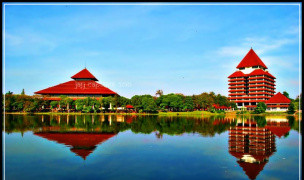 5 Terms
5 TermsHome > Terms > English, UK (UE) > Battle of Dara
Battle of Dara
The Battle of Dara was a battle between the Sassanids and the Byzantine Empire in 530. It was one of the battles of the Iberian War.
The Sassanid were at war with the Byzantine Empire from 507, supposedly because Kavadh I had tried to force the Iberians to become Zoroastrians. The Iberian king fled from Kavadh, but Kavadh tried to make peace with the Byzantines, and attempted to have Justin I adopt his son Khosrau. Justin and his nephew and heir, Justinian I, refused and sent his generals Sittas and Belisarius into Persia, where they were initially defeated. Justinian tried to negotiate but Kavadh instead sent 40,000 men towards Dara in 529. Belisarius was sent back to the region with Hermogenes as his co-commander and 25,000 men in 530; Kavadh replied with another 10,000 troops under the general Perozes, who set up camp about five kilometres away at Ammodius.
On the left and right flanks were the Roman cavalry, of questionable quality. Supporting them on their interior flanks were small bodies of Huns: 300 Hun cavalry under Sunicas and Aigan supporting the left; and as many more Huns on the right under Simmas and Ascan. Belisarius also placed a body of Heruli cavalry under Pharas in ambush position off of his left flank. A reserve composed of his own bucellarii household cavalry was held behind his centre and commanded by Armenian John; his trusted lieutenant and boyhood companion.
The Persians and Byzantines exchanged volleys of arrows, resulting in minor casualties on each side. The Persians formed two lines: the right flank under Pityaxes and the left under Baresamanes.
The first wave of the Persian attack was directed against the Roman left flank. The Persians forced a crossing of the ditch, pushing back the Roman cavalry. But the intervention of Sunicas' Huns attacking from the interior of the Roman line; as well as Pharas' Herulians attacking out of ambush from the opposite side, forced the Persians wing to retreat.
The Persians then attacked the Byzantine right wing, where Perozes sent the Persian Immortals, the elite Persian armoured lancers. The Roman cavalry defending the ditch, were pushed back here as they had been on the right. But Belisarius counterattacked with his reserve bucellari cavalry, and split the Persian troops in two. Half the Persians pursued the Byzantine cavalry, but the rest were trapped, and Baresmanes was killed along with 5,000 other men. The Byzantine cavalry also recovered and routed their pursuers. Belisarius allowed a pursuit for a few miles, but let the majority of Persian survivors escape.
Following the defeat, the Lakhmid King al-Mundhir IV ibn al-Mundhir, a Sassanid vassal, sent his troops to aid the Sassanid army. With Lakhmid aid, on 19 April 531, under the command of the Spahbod Azarethes, the Persians defeated Belisarius at the Battle of Callinicum, which led the Byzantines to pay heavy tributes for years in exchange for a peace treaty.
In 540 and 544 Dara was attacked by Khosrau I, who was unable to take it either time. Khosrau finally captured it in 573; its fall was said to have caused Justin II to go insane. Justin's wife Sophia and his friend Tiberius II Constantine took control of the empire until Justin died in 578. Meanwhile the Persians were able to march further into the empire, but Khosrau died in 579.
- Part of Speech: proper noun
- Synonym(s):
- Blossary:
- Industry/Domain: History
- Category: Ancient history; Ancient Rome
- Company:
- Product:
- Acronym-Abbreviation:
Other Languages:
Member comments
Terms in the News
Featured Terms
Super Earth
One of fifty newly found alien planets that could potentially support life. The planets have been discovered by an exoplanet-hunting telescope from ...
Contributor
Featured blossaries
stanley soerianto
0
Terms
107
Blossaries
6
Followers
Top University in Indonesia
 10 Terms
10 Terms
Browers Terms By Category
- General architecture(562)
- Bridges(147)
- Castles(114)
- Landscape design(94)
- Architecture contemporaine(73)
- Skyscrapers(32)
Architecture(1050) Terms
- General packaging(1147)
- Bag in box(76)
Packaging(1223) Terms
- General accounting(956)
- Auditing(714)
- Tax(314)
- Payroll(302)
- Property(1)
Accounting(2287) Terms
- Rice science(2869)
- Genetic engineering(2618)
- General agriculture(2596)
- Agricultural programs & laws(1482)
- Animal feed(538)
- Dairy science(179)
Agriculture(10727) Terms
- Fiction(910)
- General literature(746)
- Poetry(598)
- Chilldren's literature(212)
- Bestsellers(135)
- Novels(127)





